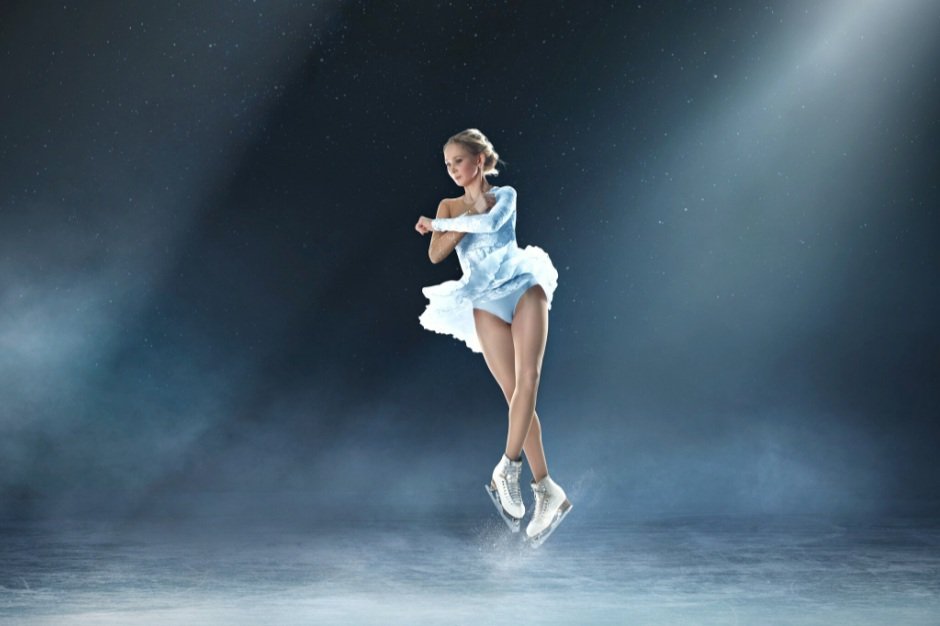Physical Therapy for Figure Skating Injuries
One of the highlights of the winter Olympics for many is the figure skating competition. Figure skating places extreme demands on the skaters, requiring a high degree of technical skill paired with artistic poise. Common figure skating injuries, like ankle sprains, patellofemoral pain syndrome, and hip and back pain, can result from a traumatic incident on the ice or from overuse. Physical therapists can help figure skaters prepare for competition through targeted strengthening and aerobic conditioning off the ice and support skaters through a comprehensive rehabilitation program should an injury occur.
The Demands of Figure Skating
Figure skating requires both a high degree of technical skill and athleticism and artistic poise and precision within a highly competitive sporting environment. Figure skating demands the endurance of middle-distance track running with the athleticism and flexibility of an Olympic gymnast. There are several figure skating disciplines, each of which places a unique demand on the skater: singles for men and women, pairs skating, ice dancing, and synchronized skating.
Figure skaters perform a 2:30 short program and a 4-minute free skate during competition, both of which have certain artistic and technical jumping, spinning, and footwork requirements. There are four key technical aspects of figure skating: stroking and footwork, jumps, lifts and throws (pairs/ice dance), and spins and twizzles.
Stroking and footwork require the skater to have great agility, mobility, and motor control while moving at a specific speed. Singles and pairs skaters perform jumps that require them to have elastic strength, power, and body control to overcome the large rotational velocities. Skaters may do jumps that involve two, three, and even four rotations in the air with various types of entrances and exits from the jumps that heighten the difficulty.
Pairs skaters also do lifts and throws while skating that demand strength, endurance, flexibility, and significant power. All skaters are required to perform spins that demand body control to sustain large rotational velocities; spins often involve incredible flexibility, extending one leg in front of or behind the skater while spinning on the other leg. A twizzle is unique to ice dance and is a multi-rotational, one-foot turn as the skaters move across the ice.
Common Figure Skating Injuries
A figure skating injury can result from a traumatic incident on the ice, such as a fall on the ice or collision, or from chronic overuse and impact on joints and muscles. The most commonly injured joint is the ankle, although injuries to the lower limb and the lumbar spine are common as well. The lower leg muscles are less able to absorb the ground reaction forces during jumps and spins due to the stiff, rigid skate boot, which places greater stress and impact on the knee, ankle, and hip.
During spins and jumps, knees are more vulnerable to injury due to the twisting force applied to them. The challenging jumps performed as singles and pairs skaters can contribute to bone stress injuries and early osteoarthritic changes due to the repetitive impact loading of the jump on the joints and bones. Figure skating also requires high flexibility demands on the hip and low back and extreme range of motion of the hip, which can lead to higher incidences of hip and groin injury and soft tissue laxity around the hip.
Common figure skating injuries include:
Patellar tendinitis
Facet joint irritation in the back
Wrist sprains and fractures
Stress fractures to the bone
Physical Therapy for Figure Skating Injuries
Physical therapists can help figure skaters prepare for competition through targeted strengthening and aerobic conditioning off the ice and support skaters through a comprehensive rehabilitation program should an injury occur. Off the ice, physical therapists design a customized strength and conditioning program for the skater that focuses on three key areas: flexibility, aerobic conditioning, and strength training.
In terms of flexibility, the therapist focuses on maintaining the range of motion of the hip and lumbar spine with sufficient muscle control so that undue stress is not placed on the hip joint or lumbar spine. Conditioning involves aerobic exercise to enhance fitness, maintain muscle balance, improve stability, and promote neuromuscular training.
Strength training involves targeted strength training of specific muscle groups, particularly in the lower legs and core, using resistance bands, lifting equipment, and weights. The therapist also incorporates exercises that replicate the demands of on-ice training, such as dynamic resisted movements and breaking down the skills of spinning, landing and takeoff, and rotations to strengthen the muscles involved and ensure proper form to reduce the risk of future injury.
Should an injury occur, the physical therapist tailors the rehabilitation program to the specific injury, incorporating manual therapy, targeted strengthening, aerobic exercise, stretching, dry needling, and body mechanic instruction as needed. Strength training is used to correct muscle imbalances, improve stability in the injured joint, and restore function in the injured muscle. Stretching and manual therapy (soft tissue and joint mobilizations) work to regain range of motion in the injured area and lengthen stiff muscles.
The therapist targets the knee, hip, and foot with strengthening and stabilization exercises as these joints require a significant amount of strength and stability to absorb the shock of repetitive jumping and turning. The therapist also focuses on core strengthening as a strong core helps to decrease low back pain and injury as well as absorb the impact of repetitive jumps and turns.
